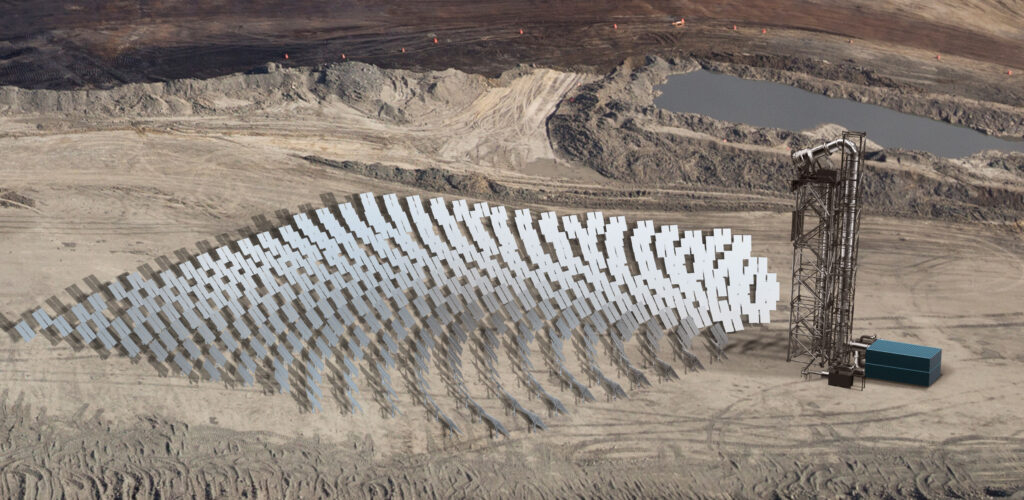GLOBAL MARKETPLACE NEEDED FOR CRITICAL MINERALS

katjen/Shutterstock
Demand for minerals required for the energy transition — so-called critical minerals — is increasing rapidly. However, current market mechanisms are immature and opaque, leading to significant market complexities and price uncertainty. So says a new report from Perth-based mining research firm State of Play.
The report, titled “Critical Minerals: Developing Price Transparency,” discusses the importance of establishing a global marketplace for critical minerals and emphasizes that a lack of price transparency is a major barrier to investment. The critical minerals industry, the authors say, is characterized by small trading volumes, lack of product standardization, and complex price discovery mechanisms. These factors contribute to the riskiness of the industry, making it less attractive to investors.
Since demand-side pressures around critical minerals are well understood, the report focuses instead on supply-side complexities that will make meeting future demand an ongoing challenge. Each of the transition minerals is geologically and chemically different, the authors note, serving varying purposes and end users. “The same goes for demand, supply, and the maturity of the markets,” they assert. “Critical minerals are not made equal.”
Immature Markets
What a number of these critical minerals have in common is the fact that they are relatively new markets. They have not been a core industry focus for decades and decades like iron ore and coal. They are not yet traded in large volumes, there is little liquidity and high volatility, all of which culminate into significant market complexities and price uncertainty.
At present, most trade in critical minerals is executed via long-term offtake contracts, leaving only a small proportion of existing product to be traded through other means. This may change with increased production over time. However, production depends on investment as well as demand, and for now many potential investors remain on the sidelines.
The authors suggest that a global marketplace could help address these issues. Such a marketplace would provide visibility of price and supply, seamless access to buyers and sellers, efficiencies in commercial negotiations and execution, and reduced risk of market distortion. It would also serve as a stepping stone for the evolution of futures markets, providing risk management tools that could attract more market participants.
The report acknowledges that establishing such a marketplace is not without challenges. It requires a critical mass of buyers and sellers, global reach, and the publication of benchmark pricing. The marketplace must also strike a delicate balance between the interests of buyers and producers, maintain confidentiality, and provide sufficient information for market participants to make informed decisions.
The authors conclude that establishing a global marketplace for critical minerals is necessary to accelerate the delivery of these minerals to market, encourage broader investment, and ensure the world’s ability to combat climate change. However, this will require greater collaboration from all stakeholders across the value chain, as well as an openness to adopt new technologies and processes. The marketplace could be the key to achieving price transparency in the critical minerals markets, spurring the investment required to finance the next wave of critical mineral projects.
Download the report here.
A ROUND-THE-CLOCK CLEAN ALTERNATIVE TO FOSSIL FUELS
Achieving high levels of renewable energy is particularly challenging for off-grid mines in remote locations because intermittent PV or wind with costly batteries still require dirty, expensive diesel for backup. Many mines also require high-grade heat for on-site processing and other uses. 247Solar offers the only renewable energy technologies that:
- Integrate seamlessly with PV or wind to provide 24/7 dispatchable baseload power
- Provide industrial grade heat up to 970 ℃ (1800 ℉) for ore processing, steam generation and other applications
- Provide their own backup by burning almost any locally available fuel to produce power even when storage is depleted, eliminating gensets and reducing fuel costs up to 80%
Get in touch to learn more
RIO TINTO CHAIR SAYS MINERS MUST INVEST MORE

Red Ivory/Shutterstock
Speaking at the Ecosperity conference in Singapore, Rio Tinto Chairman Dominic Barton said that global mining investment is too low to support the energy transition. Reuters reports (via Mining.com) that low rates of investment in the global mining sector have put the global energy transition at risk.
“The gap is humungous,” Barton said, “and I am actually very worried about whether we will be able to close (it).”
According to the International Energy Agency, the amount of metals required for each kilowatt of generation capacity has risen by 50% since 2010, and electric cars require six times more minerals than traditional combustion engine,
According to Barton, the world isn’t just facing a shortage of minerals, but also a shortage of the capital required to dig new mines, which take far longer to develop than before.
“The mining industry has reduced its investments significantly since the 2015-2016 period,” he said. “We’re hundreds of billions of dollars below what we need.”
Barton went on to say that the industry needed to build trust, and had not done a great job in persuading the public of the vital role it will play in the global decarbonization project. “The challenge” he said, “is for the industry is to be seen as part of the solution and not part of the problem.”
Read more.
SPOTLIGHT ON SCOPE 3 EMISSIONS

iStock
An article in Mining Technology taking stock of the industry’s progress toward its collective net zero goals applies a particular focus to scope 3 emissions — end-user emissions downstream of extraction and processing — as being worthy of increased attention. Author Kit Million Ross says “It is clear that the reduction of scope 3 emissions is key to mitigating climate change, but it is easy for companies to view this challenge as someone else’s problem”.
Ross quotes Rohitesh Dhawan, president and CEO of the International Council of Metals and Minerals (ICMM), in an article published by the World Economic Forum: “A company or indeed an entire sector could wring its hands at the emissions outside of its control and make it someone else’s problem – which, technically, it is.” In part, this is because ICMM members are required to have set short and medium-term goals for the reduction of scope 1 and 2 emissions, but there is no such requirement for scope 3 emissions.
To address this, the ICMM has released a document entitled Scope 3 Emissions Target Setting Guidance to assist decision makers at its member companies – who collectively represent a third of the global metals and mining industry – in setting clear, standardised targets for the reduction of scope 3 emissions.
Says Ross, “The guidance laid out in this document is long and complex, and the application of it will vary between individual mining companies and operations. However, alongside a more detailed document published in September 2023, it is useful in providing a framework.”
Access the ICMM document here.
FOLLOW & JOIN 247Solar
LinkedIn US, LinkedinEU, Twitter, YouTube
Contact: info@247solar.com
